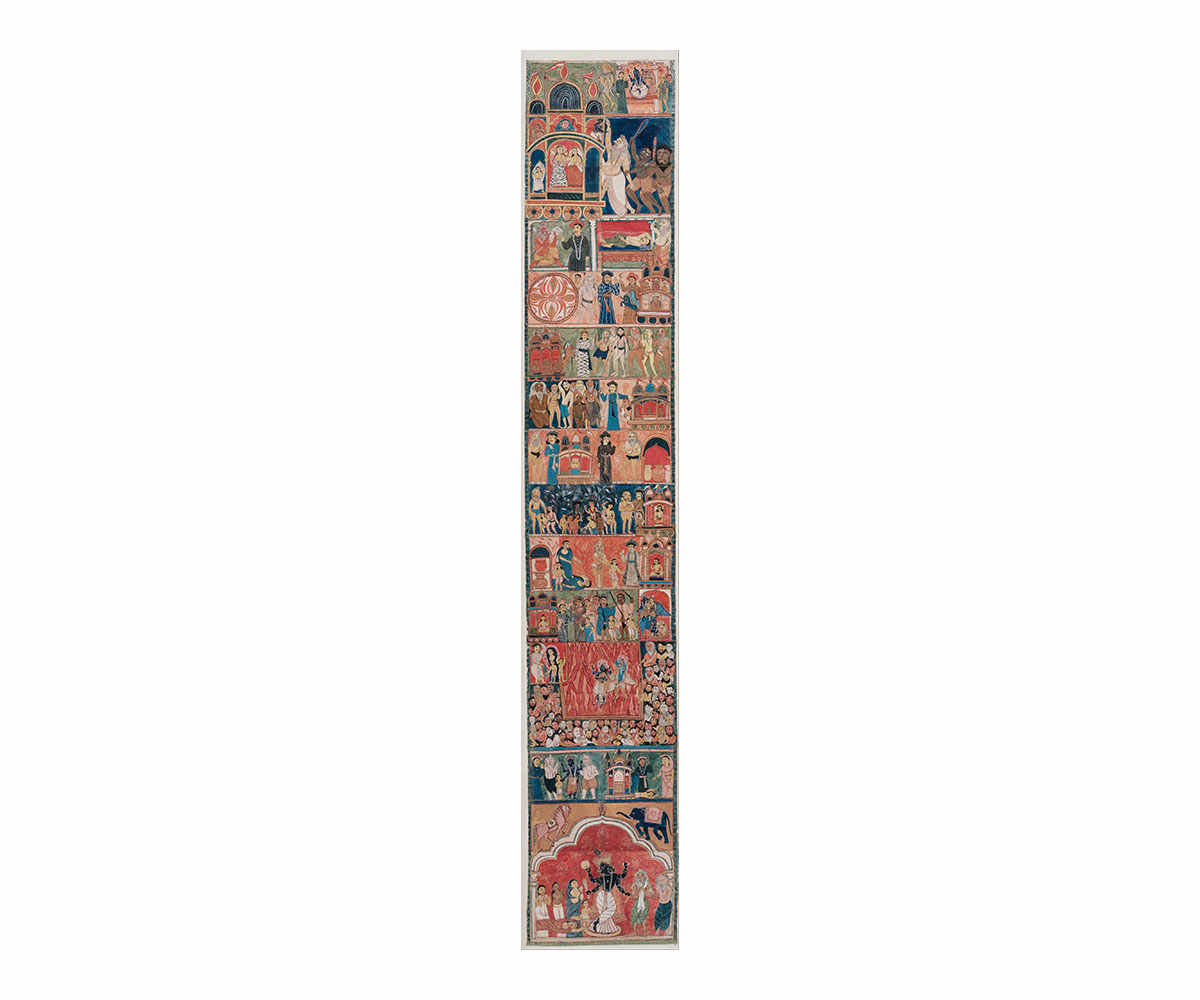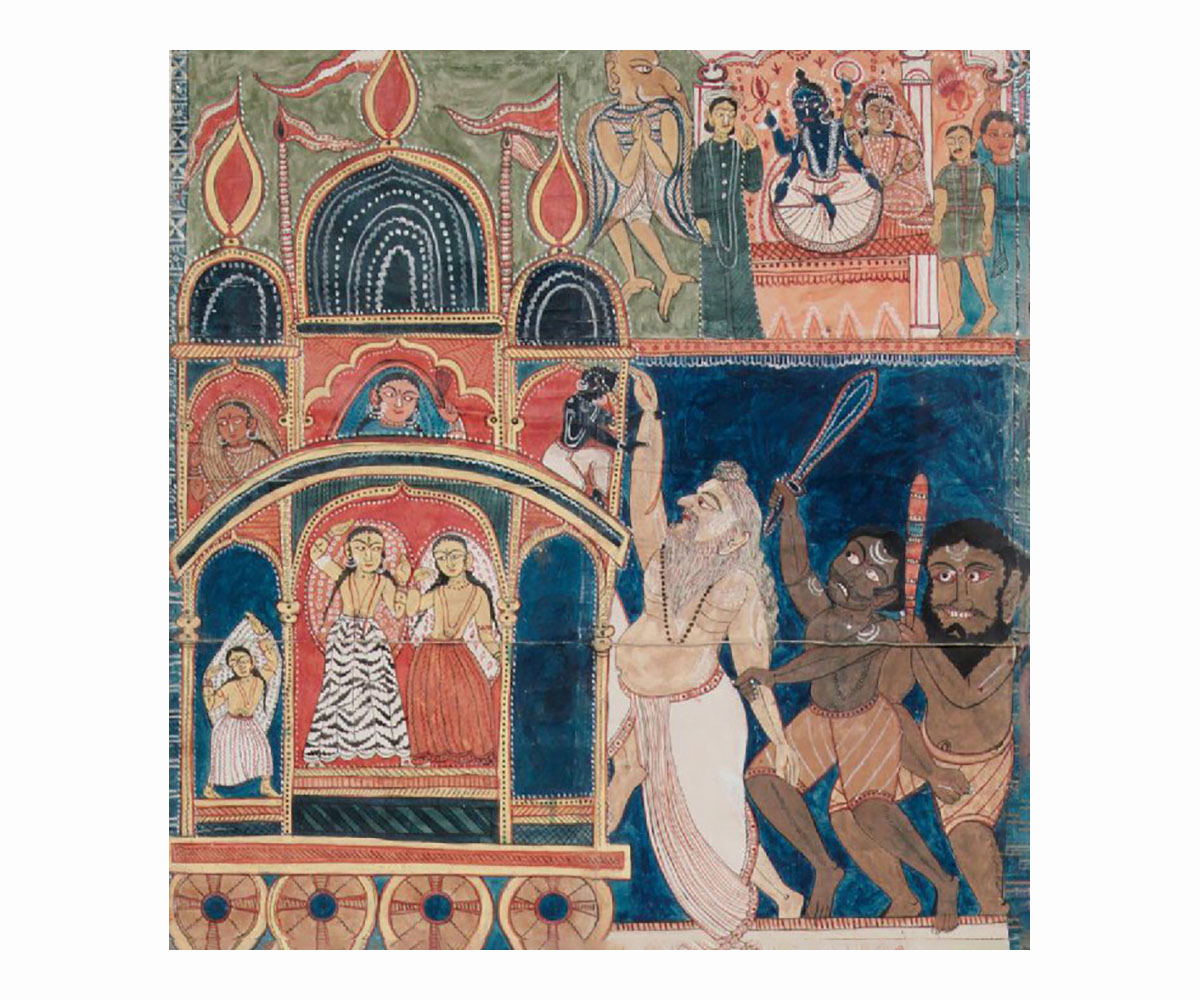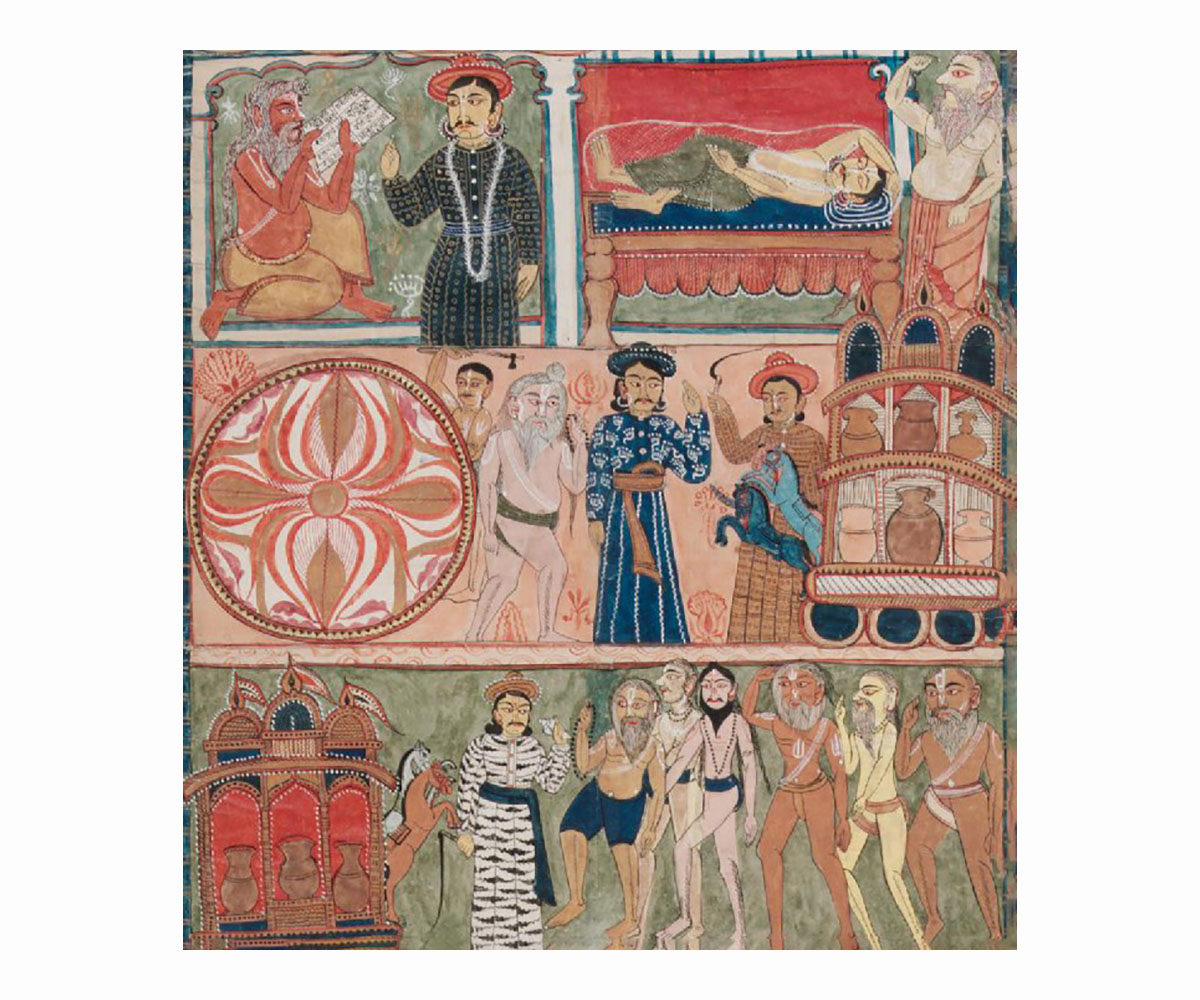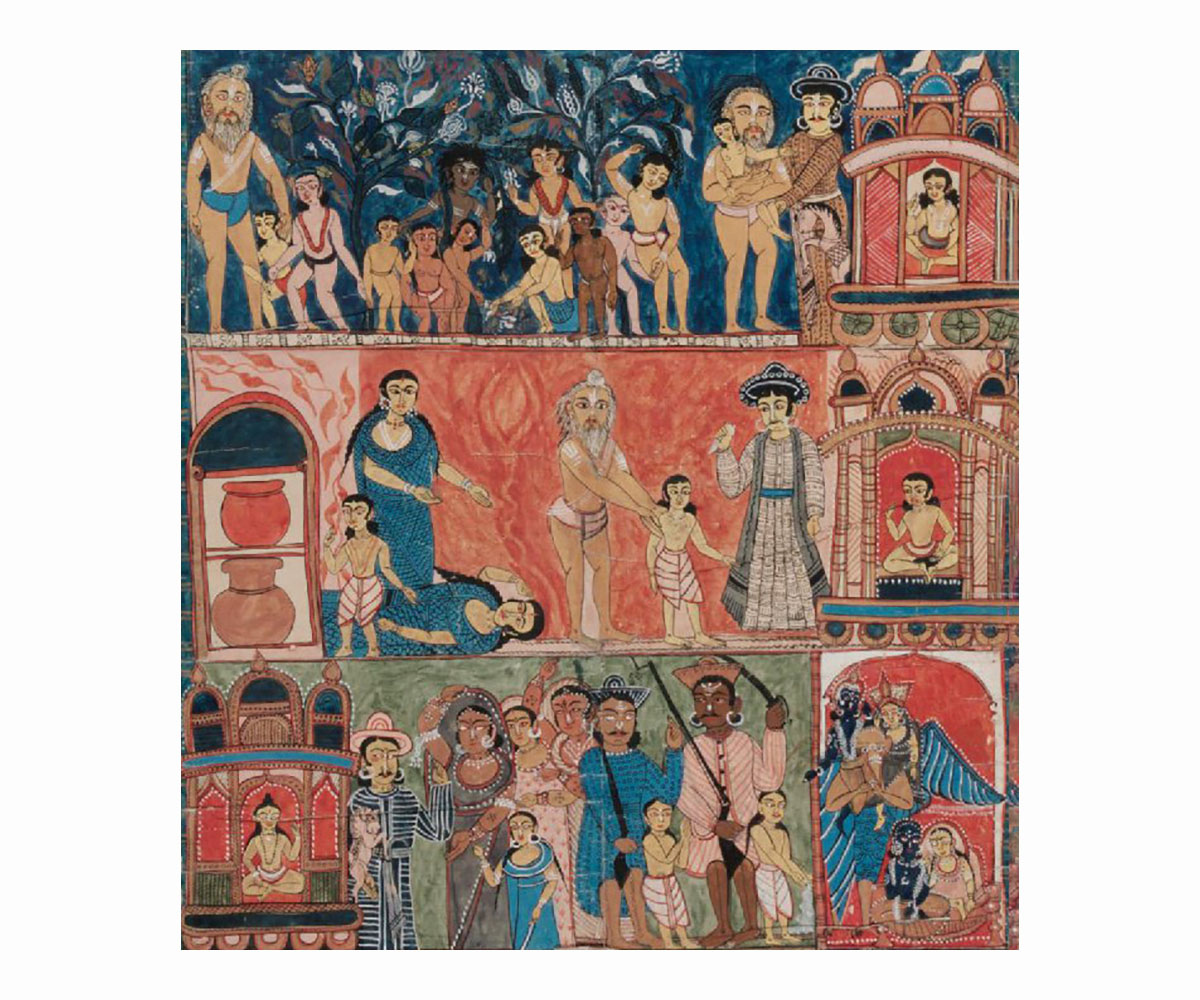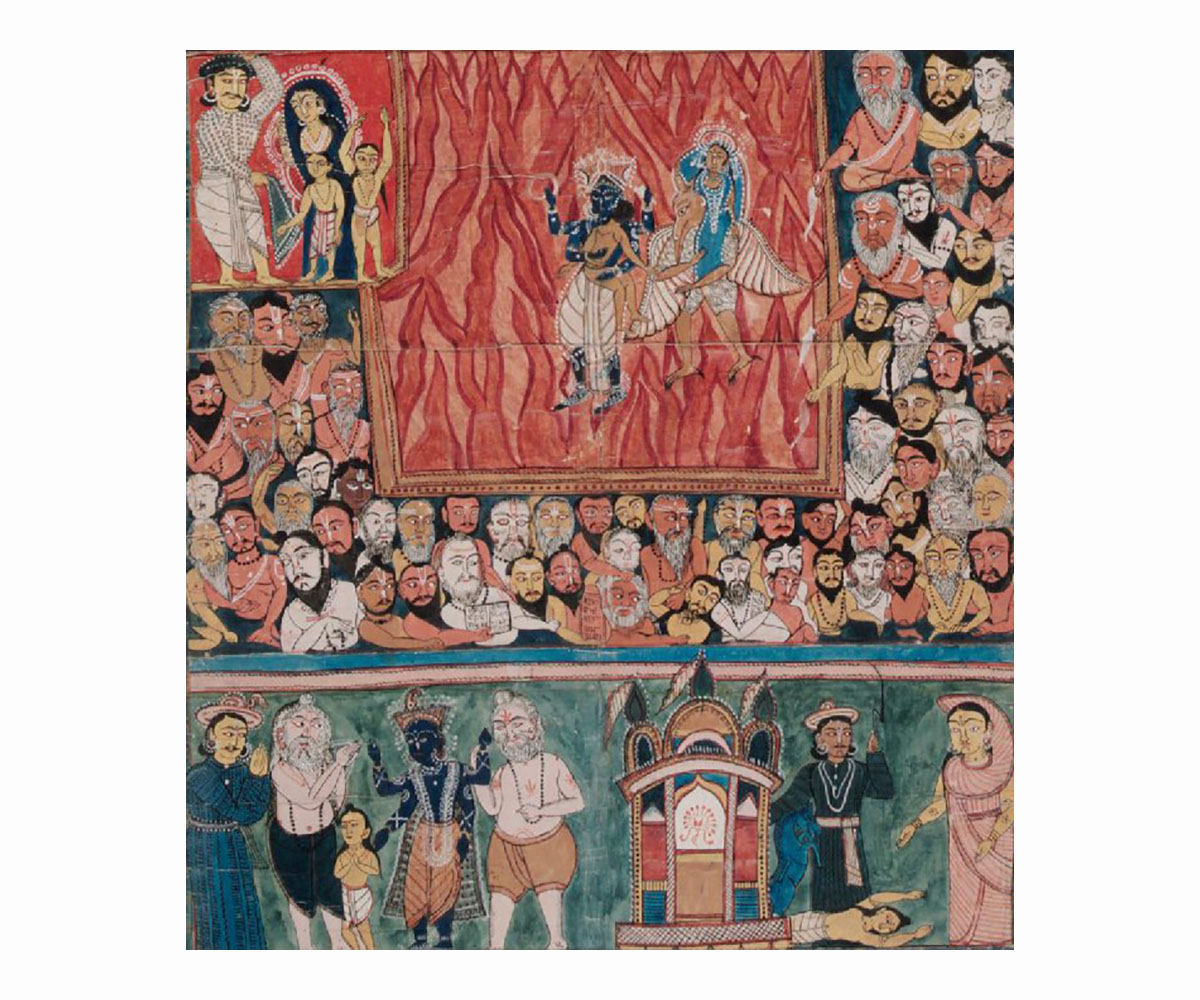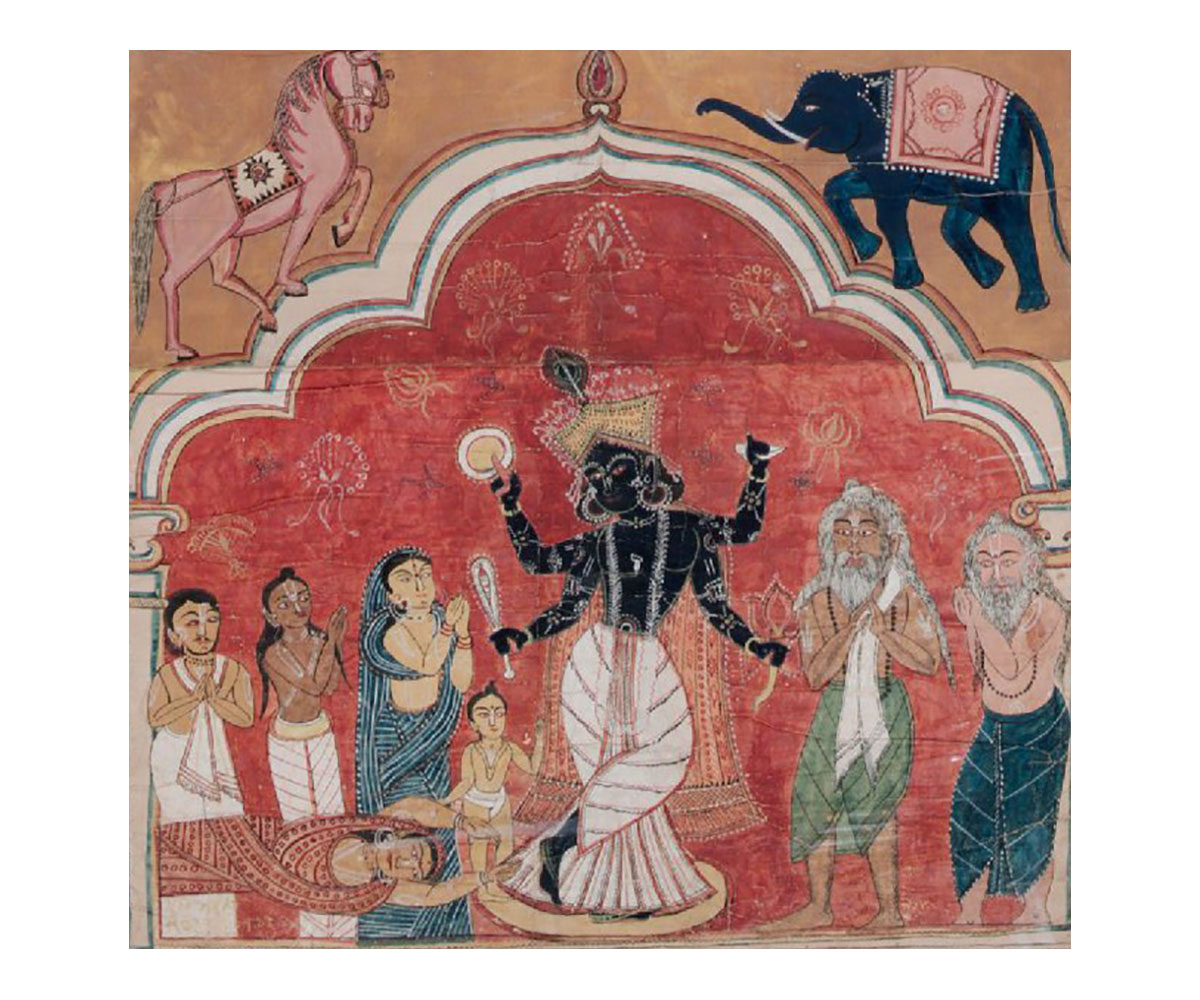ARTICLE
Patua
A folk tradition of scroll-painting in Bengal, patua combines visual and oral storytelling narrated by a community of roving performers. Patua carries three different connotations simultaneously. First, it refers to a community named Patua which has held the occupation of handling the pata, meaning “scroll” or “canvas” in Sanskrit. Second, it refers to someone who paints or displays scrolls. Third, it refers to the practice of showcasing pictures. In the patua tradition, all these three meanings overlap often, but not always.
The history of patuas is untraceable since it was a performance tradition that lacked written records. In documents from the colonial period, the word patua is used interchangeably for the caste and the practice, making it additionally harder to discern which of the either two is indicated. Presumed to be dating from as early as the tenth and eleventh centuries, the oldest surviving evidence of the scroll comes from the eighteenth century. The tradition – popular in Bengal, especially in Midnapur, Murshidabad, Birbhum and Purulia districts – is known to have been constituted by members of a specific caste (Patua), who narrated a body of stories through performance and demonstrated images by unravelling the scroll, moving across villages where they had been invited for festivals such as Durga Puja. The unfolding of pata is known as pat khelano and the narrative is called paater gaan.
Patuas belonged to the Islamic faith and the narratives in the paintings included themes from the Ramayana and Mahabharata; religious texts like the Magalakavyas; and stories of Radha and Krishna, Behula and Lakhinder, renunciation of Chaitanya, Krishan Leela, among many others. The patuas bore symbols of flora and fauna and other decorative motifs along with the story. While initially painted on dried leaves, the patuas used cloth canvases, painting them with naturally extracted colours, prepared in broken coconut shells.
Depending on their themes, there are several different kinds of patas. The Satyapir Pata is part of a syncretic belief system that fuses various local faiths. The Santhali Patai, also known as Jadu Pata or Chakshudan Pata is associated with the Santhal tribe and their rituals. The Manasa Pata centered around the snake-goddess, Manasa, who cures diseases and grants fertility. The Jama Patas depicts Yama, the god of death, and some variations depict his assistants torturing subjects in hell. The Kalighat Pata was created by Patuas who migrated to Kolkata in the eighteenth–nineteenth centuries and centred around the Kalighat Temple. In Odisha, the practice of Patachitra emerged in relation to that of patua.
During the Bengal Renaissance, Gurusaday Dutt, an Indian civil servant who was the district magistrate of Birbhum in 1930, devoted himself to collecting scroll paintings and songs, becoming instrumental in popularising and exhibition of patas. The first public exhibition was organised at the Indian Society of Oriental Art, Calcutta in 1932, followed by another exhibition in Shantiniketan (now Visva Bharati University) in 1934. He also wrote and published extensively, arguing that Patuas claimed ancestry from the ancient Chitrakar caste, which was well-known as a painter caste across India. This gave Patuas a significant impetus and saw a revitalisation of the tradition as they were commissioned by individuals and organisations to depict subjects beyond religion. From the 1970s onwards, the scenes they depicted began to include family planning, literacy campaigns, anti-dowry campaigns and environmental appeals. In the 1980s, the demand for patua increased substantially, as its popular usage attracted people outside of art collecting circles. Since the 1990s, selling patua paintings has become the mainstay of the artists.
Therefore, the patas came to be divorced from the performance tradition and got consolidated as a visual folk art. In 1986 and 1991, the Handicrafts Board of West Bengal financed training courses for Patuas in Midnapur and in 1992 a workshop was organised at the Ashutosh Museum, Calcutta University. Presently, the artists have adapted the form to offer depictions of contemporary life, and have shifted their scale to medium and small size canvases to cater to the market.
Bibliography
Our website is currently undergoing maintenance and re-design, due to which we have had to take down some of our bibliographies. While these will be re-published shortly, you can request references for specific articles by writing to hellomapacademy@map-india.org.




